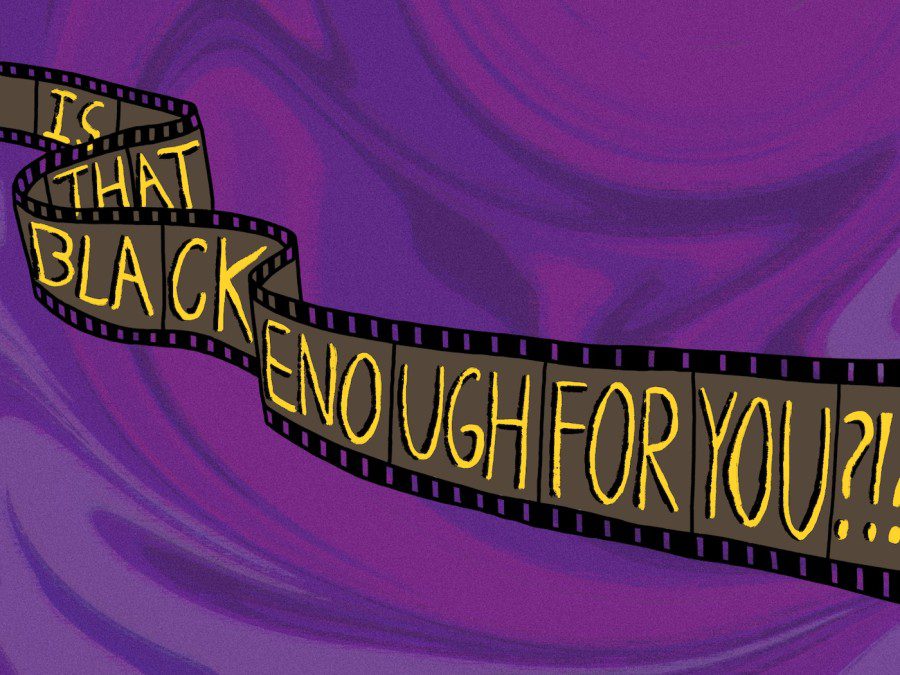Review: ‘Is That Black Enough for You?!?’ reappraises Black filmmaking
“Is That Black Enough for You?!?” documents the forgotten chapter in American film history when Black directors drove the industry. The film is currently playing in select theaters and is available to stream on Netflix.
Elvis Mitchell’s documentary “Is That Black Enough for You?!?” streams on Netflix. (Illustration by Max Van Hosen)
November 14, 2022
The new documentary “Is that Black Enough for You?!?” was recently screened at the New York Film Festival. It describes the history of Black cinema and its long-lasting impact. Written, directed and narrated by New York Times critic Elvis Mitchell, the film takes a close look at the history of Black filmmaking in the United States, paying particular attention to the 1970s Black revolutionary era.
Mitchell begins his inquiry into the history of Black cinema by looking at early representations of Black people on screen. He notes how early misrepresentations of Black people in films would directly inform movements devoted to challenging stereotypical representation. In turn, carving out three-dimensional characters written to right the wrongs of early misrepresentation. Establishing this historical connection, the documentary provides context as to why Black filmmakers working in the early 1970s were considered so radical. By going against all existing representations of Black citizens, these filmmakers altered the imaginary identity of Black Americans that moviegoers had at the time. These films criticized societal and racist preconceptions of the Black community.
Mitchell describes the most radical films from this era under the category of Blaxploitation. Including everything from social dramas to genre flicks, this term refers to popular films made by Black filmmakers for Black audiences, but culturally infamous for stereotypical representations of Black people, which — though mocking the existing traditions of Hollywood — often were taken at face value by typical moviegoers. Using archival footage from films such as “Sweet Sweetback’s Baadasssss Song,” “Killer of Sheep” and “Cotton Comes to Harlem” among others, Mitchell elevates this period’s significant impact through interviews with figures at the forefront of Black cinema including Charles Burnett, Laurence Fishburne, Whoopi Goldberg, Samuel L. Jackson, Billy Dee Williams and Zendaya. His interviews point to how these artists disrupted Hollywood’s rules, bringing forth new ideas relating to form, representation and style that inspire present-day Black filmmakers like Boots Riley and Spike Lee.
Mitchell makes it a point to emphasize that Black cinema was influenced by popular commercialized genre films such as Westerns, horror movies and early comic book adaptations. However, rather than adopting these existing film conventions, this revolutionary period saw Black filmmakers taking these concepts and making them distinctly their own, and in doing so, detailing the socioeconomic state of the Black community in America.
Mitchell provides critical insight into the formation of the Blaxploitation movement and its influence on the history of Black cinema in the United States. Addressing his personal connection to these films and their strong social impact at the time of release, Mitchell also layers the film through a filter of relatability where the personal is rendered political. “Is That Black Enough for You?!?” is a groundbreaking, educational and thorough testament to this important period in American film history and the history of cinema.
Contact Yezen Saadah at [email protected].

























































































































































